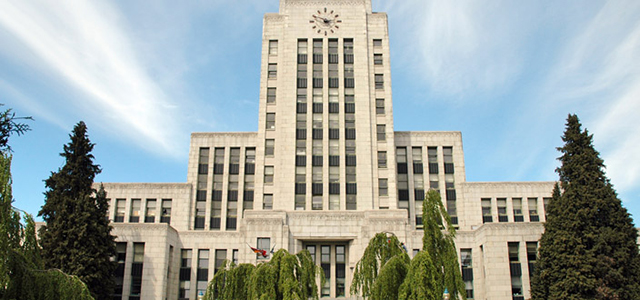
 Vancouver passes two significant actions to promote diverse housing and transit-friendly communities
Vancouver passes two significant actions to promote diverse housing and transit-friendly communities
In a significant step towards more diverse housing and fostering transit-friendly communities, today, Vancouver City Council adopted the Transit-Oriented Areas (TOA) Designation By-law PDF file (50.6 MB) and eliminated minimum parking requirements PDF file (1.1 MB).
"This is a major milestone in our commitment to expanding housing choices for all Vancouver residents," said Mayor Sim. "By integrating housing diversity with transit accessibility, we are paving the way for a more sustainable, inclusive, and vibrant city. These measures will help us meet the housing needs of our residents while fostering complete, connected communities."
Today’s actions align with requirements under the Province’s TOA (Bill 47) legislation External website, opens in new tab. Introduced in November 2023, Bill 47 aims to promote the development of more diverse housing and the creation of walkable, transit-friendly neighbourhoods.
Transit-Oriented Area Designation By-law
The City’s new TOA By-law designates 29 TOAs PDF file (50.6 MB) and adopts the following minimum densities:
- Rapid Transit (SkyTrain) Station: Within 200 metres, up to 20 storeys; within 400 metres, up to 12 storeys; within 800 metres, up to 8 storeys.
- Bus Exchange: Within 200 metres, up to 12 storeys; within 400 metres, up to 8 storeys.
The TOA By-law is accompanied with a rezoning policy which provides guidance on rezoning conditions, but is not itself a rezoning. Property owners will need to apply to rezone their property if they would like to increase height and/or density above what is currently allowed. The City is progressing through other work plans to proactively zone these and other areas, which will come forward to Council for future decisions.
Minimum Parking Requirements for all land-uses eliminated city-wide
Council also voted today to eliminate minimum parking requirements, city-wide, for all land uses. This action goes beyond the Province’s legislation for Transit Oriented Areas TOAs and Small-Scale Multi-Unit Housing (SSMUH) and makes Vancouver the fourth Canadian city (after Edmonton, Toronto and Montreal) to remove these requirements.
Prior to this decision, minimum parking requirements had already been eliminated in the downtown peninsula (2018) and in the West End and Broadway Plan areas (2023).
Removing this requirement city-wide will advance the City’s objectives to simplify regulations and accelerate permit approval times as well as move us ahead on our transportation and climate emergency goals. Part of this work includes simplifying Vancouver's Parking By-law that will be reduced from 33 to 17 pages and 63 unique parking rates will be deleted.
Accessible spots for people with disabilities, visitor spaces, bike parking spaces, and loading spaces will continue to be required.
Eliminating minimum parking requirements allows developers to provide the right amount of parking that their project needs. Staff do not anticipate significant impacts to on-street parking, however, tools such as time limits, pay parking or permit parking could be introduced to manage any impacts. Residents and businesses can request changes to parking regulations by contacting the City via 311.
Read more in the Council report PDF file (1.1 MB).
More diverse housing
City Council also passed amendments to the Zoning and Development By-law last week, aligning it with the Province’s SSMUH legislation (Bill 44) External website, opens in new tab. Multiplex homes are now permitted in five additional restricted zones: First Shaughnessy District, RT-7 District, RT-9 District, and two CD-1 zones (371 and 463). This builds on the City’s previous work to enhance housing diversity, including the consolidation of nine residential zones into the R1-1 zone, allowing up to six units per standard lot, with additional capacity for rental housing. This means the vast majority of Vancouver’s single family zones are now eligible for multiplexes.
Next Steps
The City will ensure the effective implementation of TOA and SSMUH legislations. These changes, and other initiatives to advance more housing supply and housing options, are being advanced through the implementation of the Vancouver Plan. To mitigate land speculation and in alignment with achieving the objectives of the Housing Needs Report, the focus will continue to be on increasing rental and affordable housing over market condominiums.